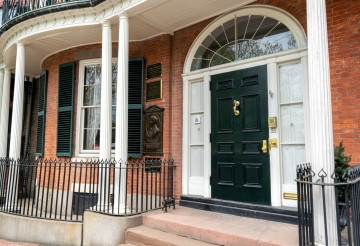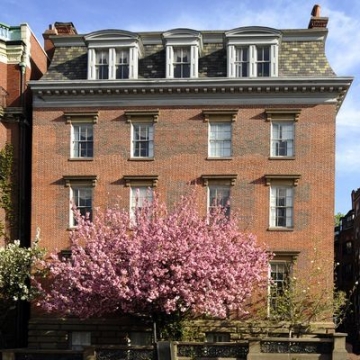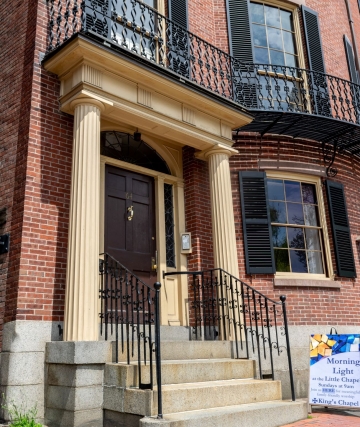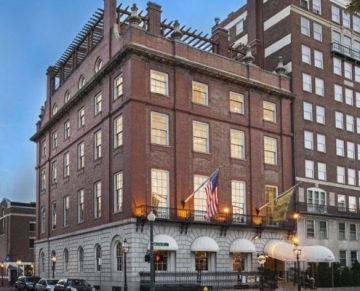William Hickling Prescott House is an historic house museum located at 55 Beacon Street on Beacon Hill. The house, built in 1808 and designed by Asher Benjamin, was designated a National Historic Landmark in 1964 for its association with William Hickling Prescott (1796-1859), one of the nation's first historians. The house in now a museum operated by the Massachusetts chapter of the National Society of Colonial Dames of America, which purchased it for its headquarters in 1944.
The Aldrich Center (also known to our members as The Engineering Center) is situated on the first floor of One Walnut Street. Designed in 1804 by Charles Bulfinch, architect of the Massachusetts State House and U.S. Capitol, this historic site is one of the earliest brick homes on Beacon Street. This landmark building was the home of John Phillips, first mayor of Boston, the famous abolitionist Wendell Phillips and Thomas Lindall Winthrop, lieutenant governor of Massachusetts from 1826 to 1832.
King's Chapel was organized as an Anglican congregation at a meeting in Boston's Town House, the city hall of the day, on June 15, 1686. Its first house of worship was a small wooden meeting house at the corner of Tremont and School Streets, where the church stands today, that was dedicated on June 30, 1689. King's Chapel Parish House is located at 64 Beacon Street, Boston, just one block up from the corner of Charles Street and Beacon Street.
Designed and built in 1910 by the society architect, Ogden Codman, for fellow Brahmins Bayard and Ruth Thayer, the five story Georgian revival townhouse was lavished with Italian marble, carved oak paneling, crystal chandeliers and tall Palladian windows. Those windows not only looked out onto the Victorian elegance of the Boston Public Garden, but they also looked into the social world of Boston’s elite, as 84 Beacon Street became one of the most fashionable salons in the city. Gentlemen in top hats and tails and ladies in silk and satin ascended the grand staircase to the heart of the house for gala evenings in the Ballroom and Library. The Hampshire House acquired its name during World War II when the Thayer family sold the building. It was then leased as a small private luxury hotel to the owners of the Lincolnshire Hotel on Charles Street. They dubbed the mansion the Hampshire House (Lincolnshire and Hampshire were both English counties). Thomas A. Kershaw has been the owner of the Hampshire House since 1969. Since then, the Hampshire House has been the ideal choice for special occasions. Its interior decor gives an aura of those grand days when the Thayer’s entertained in their magnificent mansion on Beacon Hill.



